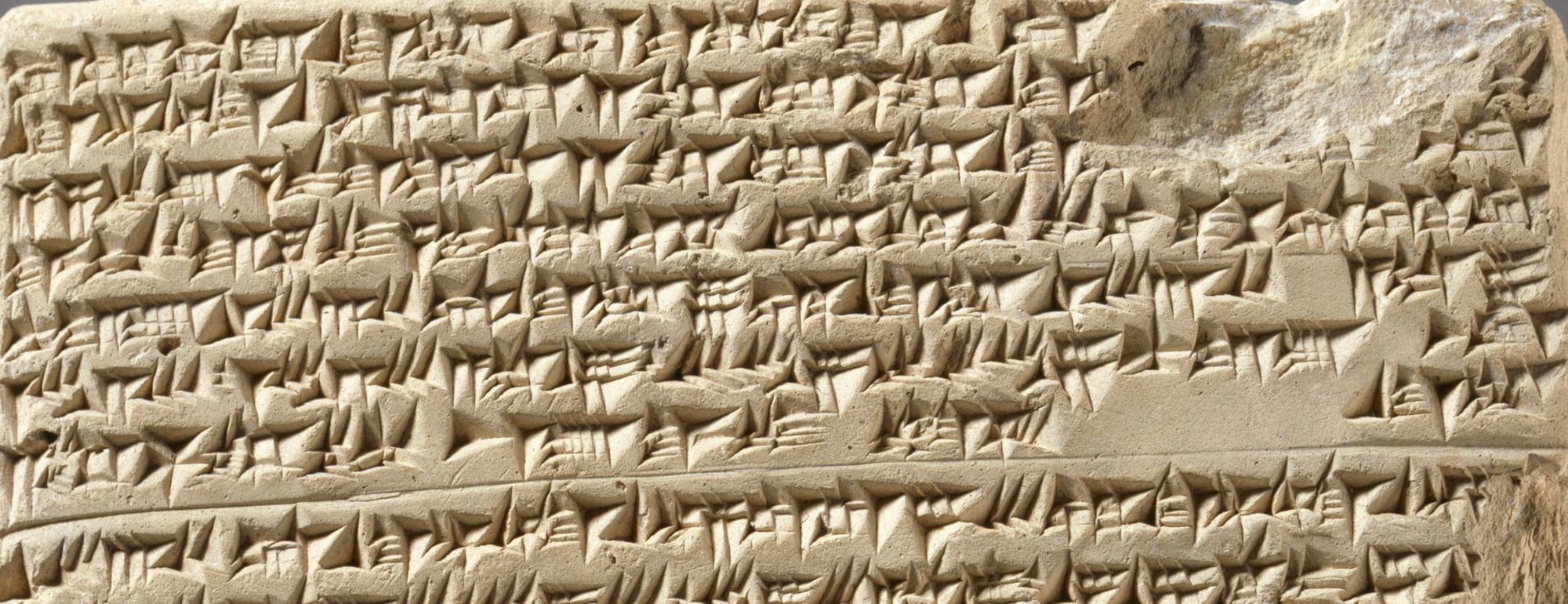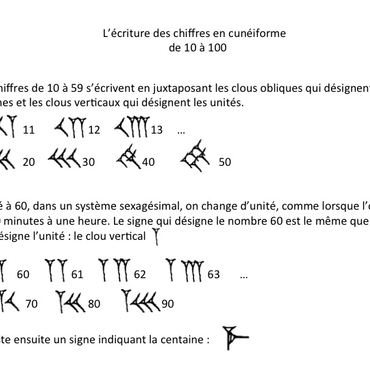
- Home
- The Esagil tablet
- Mesopotamian mathematics
The inhabitants of Mesopotamia did not count in base ten, like us, but in base sixty. Their system was similar to how we count time today, with sixty minutes in one hour. The way we measure time is one of the legacies of Mesopotamian civilisation. There was no zero to declare an empty position. The zero appeared in Mesopotamia in the Hellenistic period.
Counting in base sixty
The numbers are written by combining two signs, the unit as a vertical wedge and the ten as an corner wedge (or chevron). The number one is written with one vertical wedge, two with two vertical wedges, three with three wedges and so on up to nine. The signs for tens add up in the same way.
When he gets to sixty, the scribe does not note six corner wedges, but a vertical wedge to indicate the unit. The vertical wedge can therefore denote one or sixty, depending on its position in the written number.




